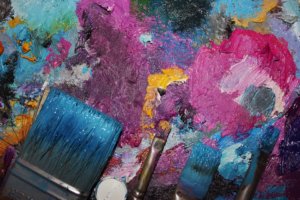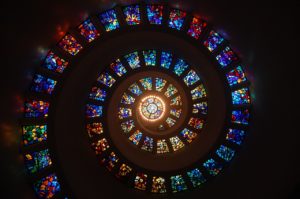The earthenware known as Majolica was derived from Chinese porcelain. It appeared in Italy during the last quarter of the 14th century. It is now believed that this type of painted earthenware was inspired by the Hispano-Moresque luster-decorated ware of Spanish origin introduced to Italy by Majorcan seagoing traders.
Majolica is believed to have been derived from century’s old Chinese porcelain. As early as the 13th century, Spain exported its tin-glazed Hispano-Moresque pottery to Italy. The Spanish port which the earthenware was shipped from was the port of Majolica. This is how the wonderful pottery got its name “Majolica”. By the17th century, Majolica pottery was being widely produced in England, and France. By the late 1800s, it was being produced in the United States.
The Victorian era brought with it mass production of majolica pieces. Companies both here and abroad were producing lovely majolica items. Due to it’s affordability, most households could afford the wonderful majolica wares.
Majolica pieces are made with a heavy type of earthenware clay. Most pieces were utilitarian, such as jardinires, umbrella stands, pitchers, teapots, and a variety of useful food containers. The designs often include animals, leaf figural shapes, fruit, and vegetable forms. Many OF THE items lacked any hallmarks, due to the fact that majolica was being mass produced, and meant to be utilitarian for the home. Among the companies that did mark their piece’s were Holdcroft, Wedgwood, Griffin,, Smith & Hill, Minton, Avalon and Clifton, and Etruscan.
Majolica was made by molding the earthenware into a unique realistic shape. The shapes depict a three dimensional form of a given subject or a scene on an item such as a platter or bowl, etc. The piece was then hand painted using vivid appropriate colors. The piece was then glazed with either a tin or lead glaze, and then fired at a very high temperature. The combination of the tin or lead glaze, and increased firing temperature, produced a glass like glaze. This unique glazing process brought out the wonderful vivid colors of the piece. On the down side, this process also left the piece a bit brittle and prone to chipping.
Majolica is widely collected, and can still be found in today’s antique market place. A fascinating majolica piece’s can add just the right touch to almost any room.
Keep in mind there are many reproduction piece’s out there. Many of these replicas are hard to distinguish from the real thing?
Here are few tips to keep in mind when buying majolica. Earthenware is very heavy, so always pick the item up, and check for weight. Note the color, a good piece of majolica will have vivid colors, and will be well painted. Colors will be appropriate for the pieces design. For example, a monkey will be in tones of brown, a leaf green, and so on. As I mentioned, many majolica pieces were not marked with a hallmark. Many of the companies that produce majolica fakes will add a popular pottery companies hallmarks, hoping to fool a possible customer.
It is wise to be careful when buying majolica. If the piece is inexpensive, but you are not quit sure if it’s the real thing, but you love it, buy it. If you love it and are not sure it’s the real thing, and it has a high price attached to it. Consider the dealer. Are they reputable? Will they let you return it, if you have it appraised, and it turns out to be a fake? It is smart to have guarantee up front, and in writing. A good antique dealer will as a rule stand behind their merchandise.
Submitted by:Sharon StajdaFor more information, please visit Majolica Ware and Majolica And Luca Della Robbia. |





